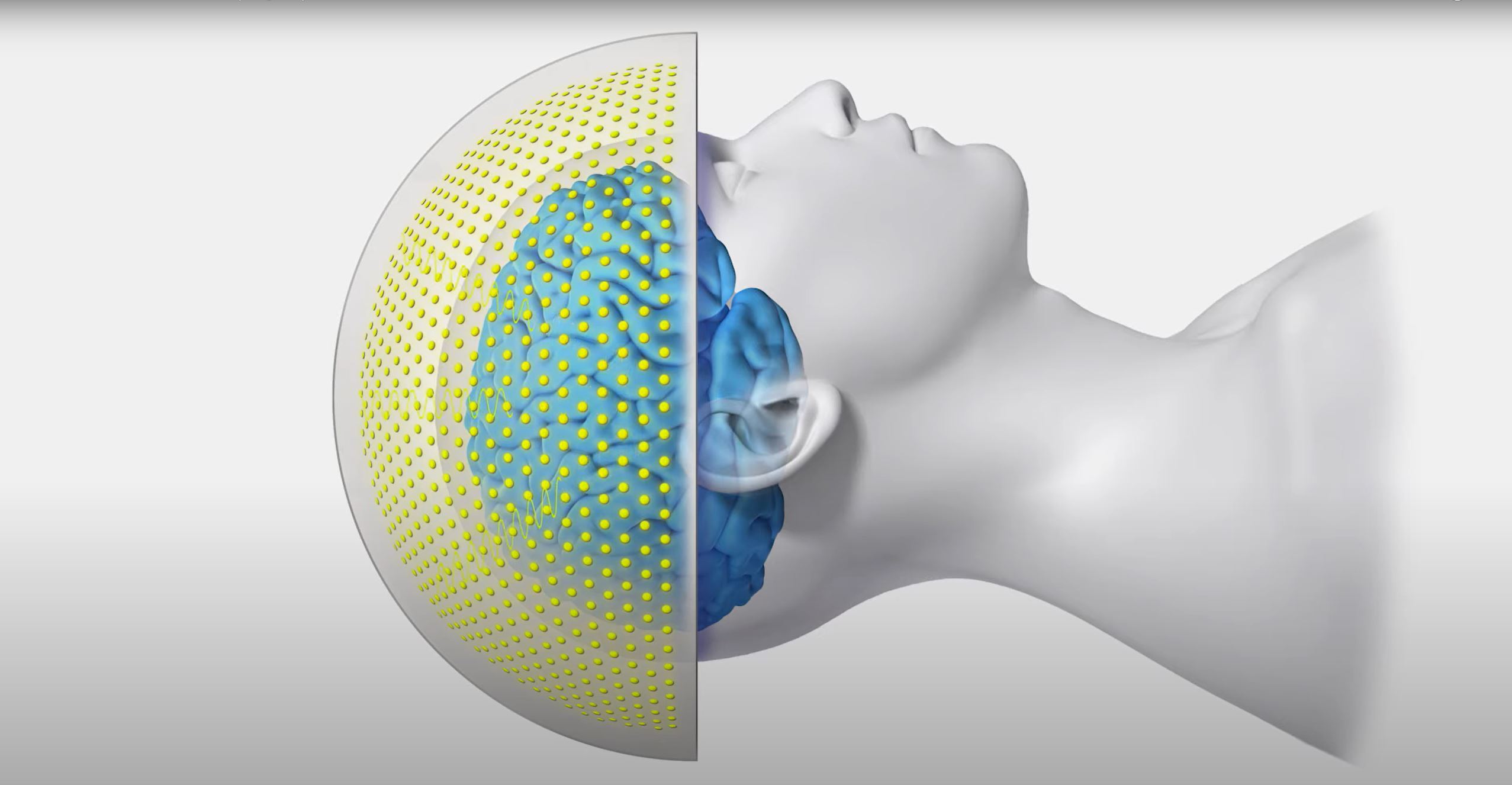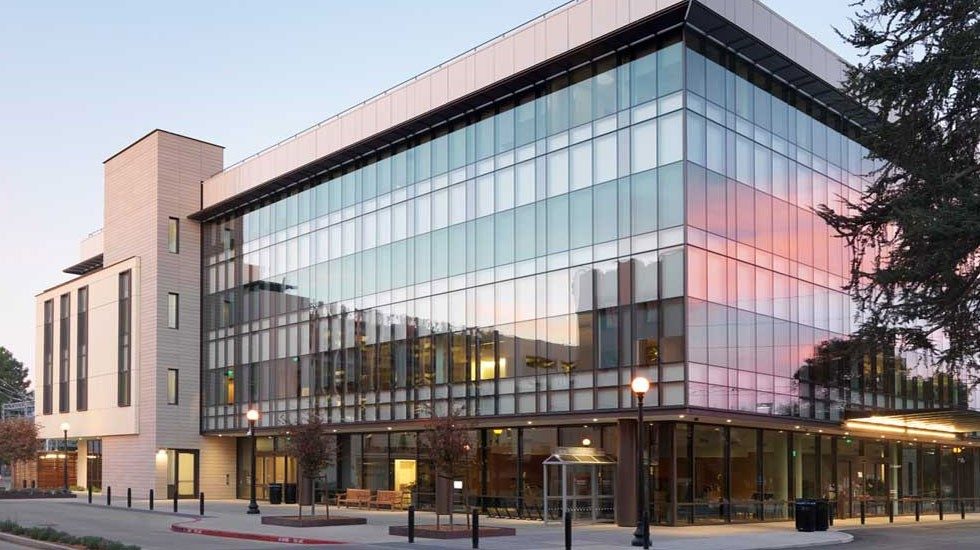- Globally regarded expertise in treating the full spectrum of movement disorders, including Parkinson's disease, essential tremor, Huntington's disease, ataxia, dystonia and blepharospasm, and Tourette syndrome. Go to Conditions Treated
- Advanced, complete treatment plans tailored to your condition, symptoms, and needs, that may include chemodenervation, deep brain stimulation, physical therapy, and speech therapy. Go to Treatments
- Clinical trials that offer access to innovative movement disorder treatments not offered at other medical centers. Go to Clinical Trials
- Multispecialty care that draws from neurology, neurosurgery, psychiatry and behavioral sciences, and physical and speech therapies. Go to Your Care Team
- Comprehensive support services to meet all your physical, emotional, and social needs. Go to Support Services
- Ease of access to comprehensive treatment at our multiple clinics throughout the Bay Area. Go to Connecting to Care
At Stanford Health Care, we treat all movement disorders, including complex cases, uncommon conditions, and advanced degenerative diseases. Conditions include:
Ataxia is a group of degenerative diseases that affect the nervous system. These conditions cause loss of muscle control in different areas of the body, such as the arms, hands, fingers, and legs. Ataxia may also affect speech and eye movements. It may be inherited (caused by an abnormal gene) or acquired (develop later in life).
There are two main types of inherited ataxia: autosomal dominant and autosomal recessive. In autosomal dominant ataxia, a parent with the disease has a 50 percent chance of passing the gene on to their child. Autosomal dominant ataxia conditions include:
- Episodic ataxia: People with these syndromes have episodes of poor coordination and balance. They may also experience blurred vision, dizziness, migraines, and seizures.
- Spinocerebellar ataxia: This group of disorders involves loss of balance and coordination and slurred speech.
- Ataxia telangiectasia (AT): In addition to lack of coordination, AT causes tiny red spider veins in the corners of their eyes or on the cheeks and ears. It appears in early childhood when a child begins walking.
- Friedreich’s ataxia: An abnormality of the FXN gene causes this ataxia, which involves difficulty walking, fatigue, and slowed speech. It usually begins between ages 5 to 15.
Blepharospasm involves abnormal twitching, blinking or other eyelid movements that you cannot control.
Cervical dystonia causes the muscles in your neck to involuntarily contract, tilting your head forward, backward, or to the side.
Corticobasal degeneration (CBD) causes nerve cell loss and atrophy of multiple areas of the brain.
Dementia with Lewy bodies causes a gradual decline in mental function, sometimes with visual hallucinations. It may also cause movement problems like symptoms of Parkinson's disease. It’s commonly called Lewy body dementia or Lewy body disease.
Essential tremor is a chronic neurological condition that creates involuntary trembling in a part of the body. It occurs most often in the hands and arms, but may also affect the head, voice, and legs.
Functional movement disorders cause involuntary movements such as tremors, twitches, spasms, and contractures. They result from a problem with the way signals are sent throughout the brain, rather than a medical condition. Other common names include functional neurological disorder.
A hereditary disorder, Huntington’s disease, also called Huntington's chorea, causes parts of the brain and spinal cord to break down.
Our specialists provide consultations and treatment for people and families affected by these conditions. We offer an integrated, holistic approach to your care. We also offer genetic testing and counseling for individuals at risk for developing these disorders and couples who could pass on genes for these conditions to their children.
Because of our extensive experience caring for Huntington’s disease, Stanford Health Care is designated a Huntington’s Disease Society of America Center of Excellence. Our doctors have helped hundreds of patients and families with Huntington’s disease, and they conduct research to improve care options for this disease.
This rare neurodegenerative disorder involves symptoms that affect movement and the autonomic nervous system, which controls blood pressure, body temperature, and digestion. Symptoms may include body stiffness, dizziness, frequent falls, passing out, and urinary incontinence.
Parkinson’s disease is a progressive nervous system disease that causes tremors, muscle stiffness, and slow, imprecise movement. It mainly affects middle-aged and elderly people, but can occur in younger adults.
Progressive supranuclear palsy (PSP) is a complex condition that affects the part of the brain that controls eye movements, causing blurry vision, difficulty opening the eyes, and infrequent blinking. PSP can also cause serious problems with balance, speech, and swallowing.
Restless legs syndrome (RLS) produces throbbing, pulling, creeping, or other unpleasant sensations in the legs when you lie down to sleep. Symptoms typically improve with movement.
This condition involves uncontrollable movements, often in the lower part of the face. It is commonly caused by taking medications that block dopamine, including those prescribe for mood disorders.
A tic is a movement or sound that you make repeatedly but can't control. For example, a motor tic is a twitching muscle. Vocal tics may involve throat clearing, yelling, or coughing.
People with Tourette syndrome have involuntary, repeated tics, including vocal sounds or muscular jerks. The condition is also called a tic disorder.
Wilson disease, a genetic (inherited) condition, prevents the body from properly getting rid of extra copper. This leads to a toxic buildup in the liver and other organs.
Our specialists are leading the way in research for movement disorders, such as Huntington’s disease and ataxia, Lewy body dementia, and Parkinson’s disease.
At Stanford Health Care, our specialists have extensive knowledge and experience in treating all types of movement disorders. We focus on accurately diagnosing the problem and tailoring the latest treatments to your unique needs.
INNOVATION HIGHLIGHTS
- Stanford Medicine researchers have developed leading-edge techniques for performing deep brain stimulation (DBS), including a frameless approach for greater comfort.
- We are offer computerized dynamic posturography (CDP) which combines virtual reality and moving plates to test your balance in different situations.
- Our researchers are actively involved in developing tools to detect movement disorders earlier, better understand symptoms, and treat conditions for greater life quality.
- As a global referral center, our center serves people from all over the world, including individuals with rare conditions and more progressive symptoms.
Diagnosis and Testing
Diagnosing movement disorders requires deep expertise, as many conditions have similar symptoms. Our doctors are highly trained and knowledgeable in all movement disorders, including many rare conditions. Our specialists perform thorough evaluations for a precise, prompt diagnosis. They may use these tests:
Neuropsychological testing checks for a wide range of thinking and behavioral functions. These tests look at concentration, language, and other abilities to identify problems with certain parts of the brain.
Your doctor may order these imaging tests to help pinpoint the underlying cause of your symptoms and diagnose the correct movement disorder:
- Magnetic resonance imagining (MRI): This imaging test uses radio waves and magnetic fields to create 3D pictures of different parts of the brain.
- Positron emission tomography (PET): A PET scan shows images of how various parts of the brain are working, including blood flow and brain receptors.
Our doctors perform a series of electrophysiological studies, which may include:
- Electromyography (EMG): This test distinguishes between movement disorders by measuring how your muscles and nerves work in response to electrical stimulation.
- Electroencephalogram (EEG): This test records the brain’s electrical activity to detect any abnormalities.
Our movement disorder specialists use innovative devices and sensors to measure your movement and balance. This technology pinpoints the underlying cause of your mobility and balance difficulties. These devices also help direct your treatment plan, monitor outcomes, and track your progress during rehabilitation.
The Stanford Health Care Kinematic Laboratory offers specialized tests, including computerized dynamic posturography and deep brain stimulation programming.
Our experienced team can improve your balance and quality of life. Our collaborative, multispecialty approach allows us to treat a wide range of balance disorders.
Our specialists perform comprehensive evaluations to identify the cause of your balance problems. Possible causes of imbalance include:
- Auditory and vestibular disorders
- Medication side effects
- Migraine headaches
- Musculoskeletal injury or weakness
- Neurological and psychiatric conditions
- Vertigo
- Vision problems
We then create your individualized treatment plan based on our findings.
Comprehensive evaluations may include:
- A detailed questionnaire about your condition
- An initial evaluation with a vestibular specialist or neurologist
- Audiology and vestibular testing
- Computerized dynamic posturography (CDP) testing to analyze your posture and specific balance problems
- Gait analysis to measure your walking speed and other details
Treatments
Our doctors may recommend certain medications to control many of the motor and non-motor symptoms in people with movement disorders.
At Stanford Health Care, we also offer minimally invasive treatments to help you manage involuntary movements, including:
Chemodenervation (botulinum toxin therapy)
Botulinum toxin therapy is a highly effective treatment for various movement disorders, such as:
- Blepharospasm
- Dystonia
- Hemifacial spasm
- Tremor and spasticity
Botulinum toxin injections work by temporarily relaxing affected muscles. Our specialists have extensive experience performing these injections.
Magnetic resonance-guided focused ultrasound (MRgFUS)
MRgFUS is a noninvasive treatment that combines magnetic resonance imaging (MRI) and sound waves (ultrasound) to target a specific area of your body to treat many conditions, including essential tremor and Parkinson's disease.
Deep brain stimulation
Some movement disorders result from altered brain activity. Deep brain stimulation (DBS) can help reset these faulty brain signals and improve your symptoms.
In deep brain stimulation (DBS), also called neuromodulation, doctors implant a device that produces electrical impulses to disrupt irregular brain signals that cause involuntary movements.
Our movement disorder specialists are experts at programming the device to meet your needs. Our sophisticated technology and data-driven approach enable us to program your stimulator settings for optimal results.
Movement disorders can cause changes in mood, thinking, and behavior. We offer multiple psychological approaches and techniques to address these complications and enhance your quality of life.
Cognitive behavioral therapy (CBT)
CBT treats cognitive challenges, such as attention, mental processing speed, problem solving, memory loss, and language issues.
Dialectical behavioral therapy (DBT)
DBT is a type of CBT that focuses on solving behavioral problems for people with multiple cognitive dysfunction disorders.
Hypnosis
Hypnosis can help calm tremors, relax muscles, and manage stress.
Movement and Speech Therapy Services
We offer a comprehensive range of therapies to address your specific symptoms and help you maximize function. Our therapy options include:
- Balance therapy, also called vestibular rehabilitation therapy, involves specialized exercises to improve your balance, address dizziness, and prevent falls.
- Exercise therapy: Regular exercise is critical for people with movement disorders to improve balance, mobility, muscle control, and strength. Exercise also increases oxygen delivery and neurotransmitters to aid the heart, lungs, and nervous system.
- Physical therapy: Physical therapy aims to maximize function in specific body parts and relieve pain. Your physical therapy plan may include exercises and soft tissue manipulation, hands-on techniques for muscles, ligaments, tendons, and connective tissue.
- Speech and swallowing therapy: Speech therapy helps manage and improve speech, language, communication, and swallowing.
Care for neurological disorders goes beyond medical treatments. We encircle you and your family with supportive services to help treat your mind, body, and soul.
Innovation Through Clinical Research
Stanford Health Care Neuroscience actively participates in groundbreaking research and clinical trials to evaluate new and better ways to diagnose, treat, and manage neurological disorders. Participating in a trial may give you access to experimental therapies that are not available otherwise. We also partner with the Wu Tsai Neurosciences Institute to better understand the brain, develop new treatments for brain disorders, and promote brain health.
Clinical Trials
Clinical trials are research studies that evaluate a new medical approach, device, drug, or other treatment. As a Stanford Health Care patient, you may have access to the latest, advanced clinical trials.
Open trials refer to studies currently recruiting participants or that may recruit participants in the near future. Closed trials are not currently enrolling, but similar studies may open in the future.
A diagnosis of a neurological condition—and the changes it may bring—can be unsettling. We offer you and your caregivers the personalized support you need at every step. Your team listens to you and develops a plan for your situation. And you’ll work with the same team from diagnosis throughout treatment, so we can get to know you and your needs.
Each patient's experience is unique, which is why we provide personalized care. Our team tailors treatment and supportive services to meet your individual needs.
Your Doctors
Movement Disorders Specialist
This doctor specializes in neurology (relating to the brain, spinal cord, and nervous system), and movement disorders. They are experts in using medications and other nonsurgical options to treat movement disorders.
View All {0} Movement Disorders Specialists »Neurosurgeon
A neurosurgeon is a medical doctor who specializes in treating brain and spinal cord disorders using surgical and minimally invasive treatments.
View All {0} Neurosurgeons »Advanced Practice Provider
These providers are nurse practitioners and physician assistants who work closely with your movement disorders specialist to provide support and help with diagnosis and treatment. They may also recommend medications and lifestyle changes.
View All {0} Advanced Practice Provider Doctors »Extended Care Team
Neuropathologist
Neuropathologists specialize in diagnosing conditions of the brain and nervous system through microscopic evaluation of tissue sampled during biopsy or surgery.
Neuroradiologist
A neuroradiologist is a doctor who specializes in interpreting diagnostic imaging of the brain and nervous system. They work behind the scenes to help provide an accurate image of the brain to show possible structural causes of seizures.
Neuropsychologist
A neuropsychologist is a licensed clinical psychologist with special training in neurology, psychology, and cognitive processes and behaviors. These doctors use neuropsychological tests to help the care team evaluate people and diagnose movement disorders.
Neuropsychiatrist
A neuropsychiatrist is a medical doctor who specializes in neurology and psychiatry to treat mental health symptoms related to neurological conditions. Neuropsychiatrists provide psychosocial counseling and prescribe medications for people with movement disorders who also have mental health symptoms, such as anxiety or depression.
Movement Disorders Nurses
These nurses are clinical nurse specialists who have special training in neurology and care management for people with movement disorders. They are experts in patient care, education, and coordination of services. They may also participate in research efforts.
Support Services
Your wellness is our top priority. As part of your care, we design a wellness plan to support you and your family before, during, and after treatment.
We offer a wide array of support services to help you to feel your best. Contact our Neuro Care Services for your personal support plan.
We make access to care as simple as possible. We anticipate what you need and provide support when you need it. Our network of locations puts our services within your reach. User-friendly digital health tools help you stay connected with your care team. We accept most insurance plans and offer discounted transportation, short-stay options, and international travel and translation services. We help make sense of the details, so you can make decisions that are right for you.
At the Stanford Health Care Movement Disorders Center, we make accessing care easy and convenient. We make every effort to coordinate your appointments so that you can see multiple providers, as needed, during a single visit .
For Referring Physicians
PHYSICIAN HELPLINE
Fax: 650-320-9443
Monday–Friday, 8 a.m.–5 p.m.
Stanford Health Care provides comprehensive services to refer and track patients, as well as the latest information and news for physicians and office staff. For help with all referral needs and questions, visit Referral Information.
You may also submit a web referral or complete a referral form and fax it to 650-320-9443 or email the Referral Center at ReferralCenter@stanfordhealthcare.org.
To request an appointment with a movement disorders specialist, call 650-723-6469.









